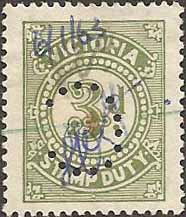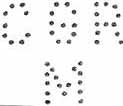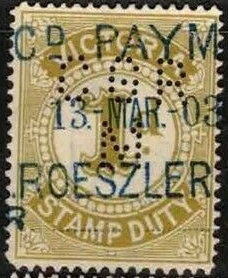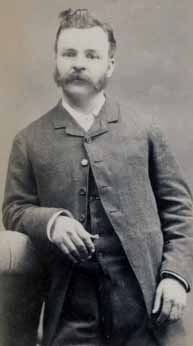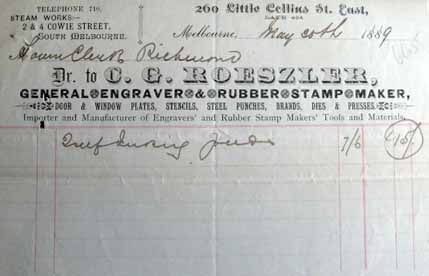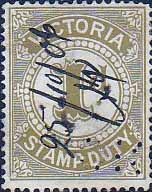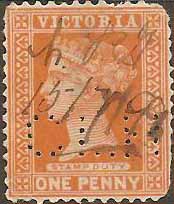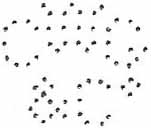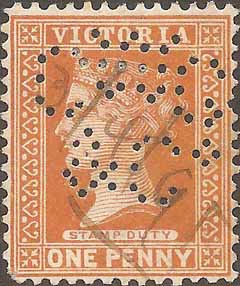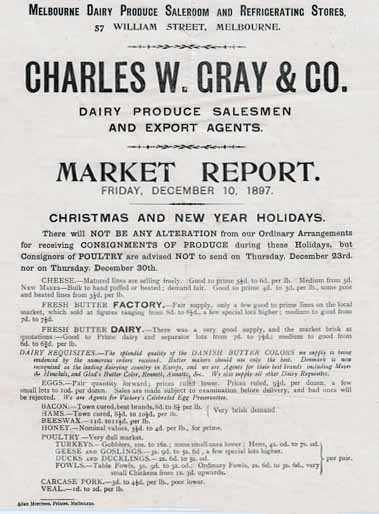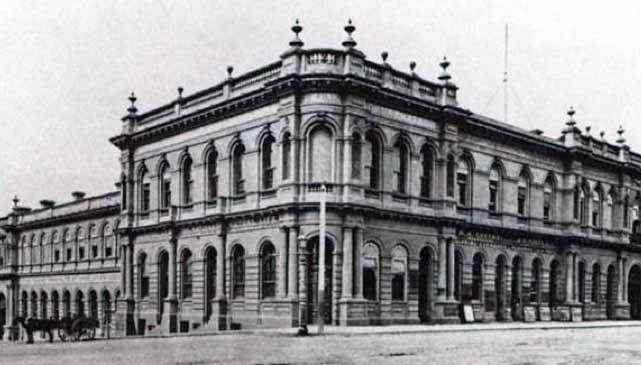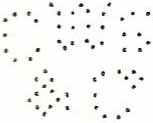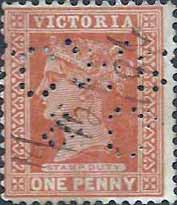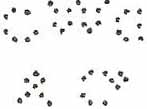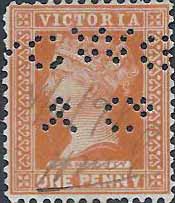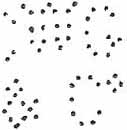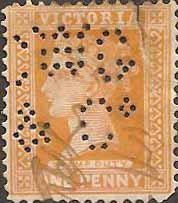|
Private Revenue Perfins of Victoria An Elsmore Coath production The authors would welcome your comments additions or input into this work A B C D E F G H I J K L M N O P Q R S T U V W Y Other C -------------------------------------------------------- C.a
User: Constable & Co Share & Stock Brokers Address: 25 O'Connell Sydney, NSW Revenue Use: 1930's-1966 Series 3d, 6d, 9d, 1/-, 1/6, 2/-, 2/6d, 3/-, 4/-, 5/-, 6/-, 10/- £1, 30/-, £5, £10. 1966 Series 1c, 2c, 3c, 4c, 5c, 8c, 10c, 15c, 20c, 25c, 30c, 40c, 60c, 75c, $1, $2, $3, $10, $20 Rarity Scale:
1930's-1966 Series 3d R3, 6d R3, 9d R3, 1/- R4, 1/6 R4, 2/- R4, 2/6d R4, 3/- R4, 4/- R3, 5/- R2, 6/- R4, 10/- R2, £1 R2, 30/- R4, £5 R4, £10 R4
1966 Series 1c R3, 2c R3, 3c R4, 4c R3, 5c R2, 8c R3, 10c R2, 15c R3, 20c R2, 25c R4, 30c R3 40c R3, 60c R4, 75c R4, $1 R4, $2, R3, $3 R4, $10 R4, $20 R4
Background: *In 1961 David Constable formed the Stock Broking firm Constable and Co and took a seat on the Sydney Stock Exchange. Constable and Co traded until 1971 when they merged with Rudd, Bain, McDonald and Co to become Constable and Bain. Device: Most likely a single die device. The same pattern is found on revenue stamps of NSW, Queensland and Victoria, but Constable and Company seem to have operated exclusively from Sydney, so these C patterns are most likely all strikes for the same Sydney device. This C pattern is only found used on revenue stamps. Related patterns: Refer to other Constable and Company, C, patterns in: NSW: C.a Qld: C.a * "Sydney Stockbrokers" Salsbury and Sweeny (1992) -------------------------------------------------------- CGR/M.a
User: C G Roeszler Engravers & Die Sinkers Address: Various, See Background below. Revenue Use: Rarity Scale:
Background: *The company of C G Roeszler was a family company and they trace there establishment to 1889 but there is mention of C G Roeszler (himself) in Melbourne from as early as 1873. The Company made Brass plates, steel punches, die sinks, and Rubber stamps as well as undertaking a range of engraving. They occupied a myriad of locations in Melbourne over time, including the following, on or around the date shown: 41 Swanston St, 1873 201 Little Collins St, 1915 264 Little Collins St, 1917-20 429 (some sources 420) Little Collins St, 1930-36 The company was still trading as of 2014 and they still sell the same range of products.
C G Roeszler (c1890)
Device: The CGR/M.a device was a single die device and most likely manufactured by C G Roeszler. The device was in service from 1900-1908 Related Patterns: Nil * Trove -------------------------------------------------------- CK.a
User: Unknown Address: Melbourne, VIC Revenue Use: 1902 Series 1d Rarity Scale:
1902 Series 1d R4
Background: Unknown Device: The CK.a pattern is made from a temporary die in a single die format. Such devices, which could produce these temporary patterns, were used by some Stamp Vendors in Melbourne from late 1800’s and early part of the 20th Century. This particular pattern is known over the period 1900-1906. It is most commonly found on postage stamps. Related Patterns: Nil -------------------------------------------------------- CLH.a
User: Crisp Lewis & Hedderwick(unconfirmed) Solicitors Address: 414 Little Collins St, Melbourne, VIC Revenue Use: 1886-1899 Series, inscribed 'STAMP DUTY' 1d (shades) Rarity Scale:
1886-1899 Series 1d R4 Background: *The Law firm that was to become Crisp, Lewis & Hedderwick was started in the 1855 when Kenric Edmund Brodribb, who had been a lawyer in Hobart and had moved to Melbourne in 1855 to marry May Anne Butler, also from Hobart. In 1857 Brodribb was joined by Thomas Crisp. Crisp had served his articles in Tasmania and had managed the Burnie office of his families legal firm of Crisp (David) & Crisp (Samuel) of Hobart. In 1859 they were joined by R Lewis and the firm became Brodribb, Crisp and Lewis. Later in the 1870’s Brodribb retired and a Mr Wills joined the firm but in 1877, Wilks retired and Henry Hedderwick joined the firm and they were known as Crisp, Lewis, and Hedderwick. During the Melbourne land boom (1883-89) Crisp speculated heavily in land and although successful at first when the boom broke and the price of land fell sharply, Crisp lost heavily. He was very worried by his financial situation, and although initially convinced by friends that his position was recoverable, Crisp committed suicide 18 September 1989. Crisp was 59 and left a wife and 10 children. The firm continued to trade as Crisp, Lewis & Hedderwick but they elevated the junior partner, Mr Fookes and later became Crisp, Lewis, Hedderwick & Fookes. This partnership dissolved acrimoniously in 1906 and became two firms, one staying on at the Collins St address and named, R E Lewis and Son and another named Hedderwick Fookes & Hedderwick. Device: The CLH.a pattern is made from a temporary die in a single die format. Such devices, which could produce these temporary patterns, were used by some Stamp Vendors in Melbourne from late 1800’s and early part of the 20th Century. This particular pattern is known over the period 1898-99 and it is only found used as a revenue stamp. Related Patterns: Nil * Trove -------------------------------------------------------- CWG/&Co.a
User: Chas. W Gray & Co(unconfirmed) Dairy Produce Salesmen and Export Agents Address: 57 William St, (adjoining Western Market) Melbourne, VIC Revenue Use: 1886-1899 Series, inscribed 'STAMP DUTY' 1d (shades) Rarity Scale:
1886-1899 Series 1d R4
Background: The records show that the firm of Charles W Gray & Co was formed in about 1885 and that it traded until 1905. Initially the principal of the company was Charles but later, towards 1900 responsibility moved to his son John. The company operated as agents for primary producers, and in particular producers of dairy products including cheese, cream and butter as well as eggs. The collected deliveries together and had regular Auction sales. These arrangements were most commonly with producers and produce co-operatives in northern Victorian areas such as Euroa, Tallangatta, Wodonga, and nearby areas, as well as Gippsland including Sale, Bairnsdale, etc. In 1905 the company was dissolved by mutual consent. At that time Charles W. Gray was appointed representative in Melbourne for Messrs. Oetzes and Gerritsen and Messrs. M'Keever and Co., of London, butter salesmen, and in addition he continued to operate his Produce Auctions.
Note: The above Market Report dated 10 December 1897 shows the address of company as 57 William St. In some Newspaper advertisements by the company they refer to their “rooms”, most likely Auction rooms, at the Western Market. The Western Market was established in 1841 and was Melbourne's first official fresh food and vegetable market. It operated on the site of the National Mutual (now SunCorp) Building, 433-455 Collins St, which occupies the block of Collins, Market and William Streets, and Flinders Lane.
Western Market Building, northeast corner. The right hand side is the Collins St (north) frontage, the left hand side of the image shows the Market St (East) frontage as Market St descends towards Flinders Lane. 57 William St would have been on the William St (or Western) frontage just around the corner of Collins St. Earlier studies of the Private Perfins of Australia stated that the address of Charles W Gray & Co was 497 Collins St. We can find no record of this. 497 Collins is the iconic Rialto Building, built in 1889-90, but Charles W Gray & Co are not listed as tenants. The Rialto Building is in the middle of the next block heading west down Collins St, and is no way associated with the Western Market. Device: The various CWG/&Co patterns are almost all made from a temporary die in a single die format. Such devices, which could produce these temporary patterns, were used by some Stamp Vendors in Melbourne from late 1800’s and early part of the 20Th Century. The company purchased two customised devices, the first in 1899, which was in use until 1903, and another in 1902 that was in service until 1905. But neither are found used on revenues stamps. With the 2 patterns made from the customised devices and the many (13+) patterns that were made from the temporary die there are 15+ patterns that could be reasonably attributed to Charles W Gray & Co and these include patterns in the layout CWG, CWG/C, CWG/&C and the CWG/&Co. The patterns found on revenue stamps are as follows: CWG/&Co.a 1895-96 CWG/&Co.b 1896 CWG/&Co.c 1896-1901 CWG/&Co.d 1897 Related Patterns: Refer to other Charles W Gray & Co patterns in:
VIC: CWG/&Co.b, CWG/&Co.c, CWG/&Co.d
*Trove, Andrew Baylis -------------------------------------------------------- CWG/&Co.b
User: Chas. W Gray & Co(unconfirmed) Dairy Produce Salesmen and Export Agents Address: 57 William St, (adjoining Western Market) Melbourne, VIC Revenue Use: 1886-1899 Series, inscribed 'STAMP DUTY' 1d (shades) Rarity Scale:
1886-1899 Series 1d R4
Background: See CWG/&Co.a Device: See CWG/&Co.a Related Patterns: Refer to other Charles W Gray & Co patterns in:
VIC: CWG/&Co.a, CWG/&Co.c, CWG/&Co.d -------------------------------------------------------- CWG/&Co.c
User: Chas. W Gray & Co(unconfirmed) Dairy Produce Salesmen and Export Agents Address: 57 William St, (adjoining Western Market) Melbourne, VIC Revenue Use: 1886-1899 Series, inscribed 'STAMP DUTY' 1d (shades) Rarity Scale:
1886-1899 Series 1d R4
Device: See CWG/&Co.a Related Patterns: Refer to other Charles W Gray & Co patterns in:
VIC: CWG/&Co.a, CWG/&Co.b, CWG/&Co.d -------------------------------------------------------- CWG/&Co.d
User: Chas. W Gray & Co(unconfirmed) Dairy Produce Salesmen and Export Agents Address: 57 William St, (adjoining Western Market) Melbourne, VIC Revenue Use: 1886-1899 Series, inscribed 'STAMP DUTY' 1d (shades) Rarity Scale:
1886-1899 Series 1d R4
Background: See CWG/&Co.a Device: See CWG/&Co.a Related Patterns: Refer to other Charles W Gray & Co patterns in:
VIC: CWG/&Co.a, CWG/&Co.b, CWG/&Co.c -------------------------------------------------------- A B C D E F G H I J K L M N O P Q R S T U V W Y Other © copyright 2011 |

